#antarctic beech
Explore tagged Tumblr posts
Text
#2348 - Nothofagus cliffortioides - Mountain Beech

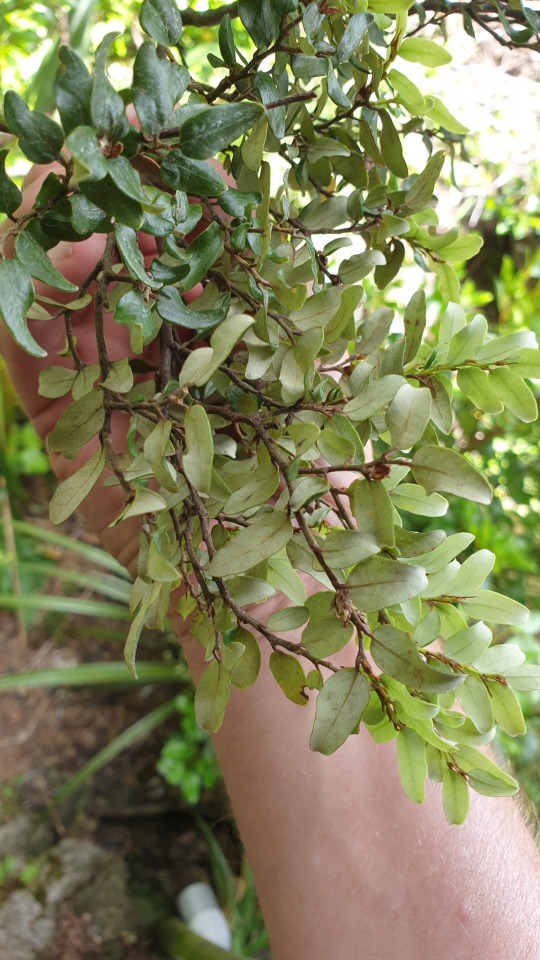
AKA Fagus cliffortioides, Fuscospora cliffortioides and in Māori tawhai rauriki.
A species of Southern Beech endemic to New Zealand, widespread in mountainous areas at high elevations, but near the treeline it forms 'goblin forests' barely 2m tall. Lower on the slopes it easily reachs 20m.
Not the only Nothofagus species I saw on the trip - they're the dominant trees in most higher altitude forests.
Whakapapa Village, North Island Volcanic Plateau, New Zealand
9 notes
·
View notes
Text
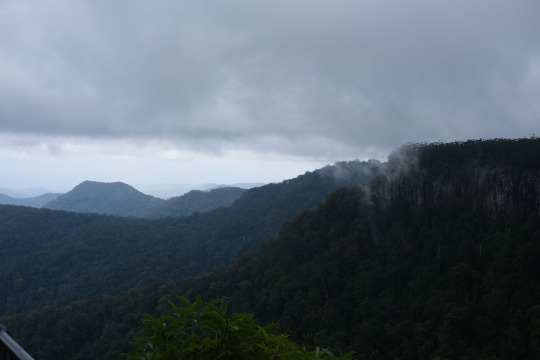


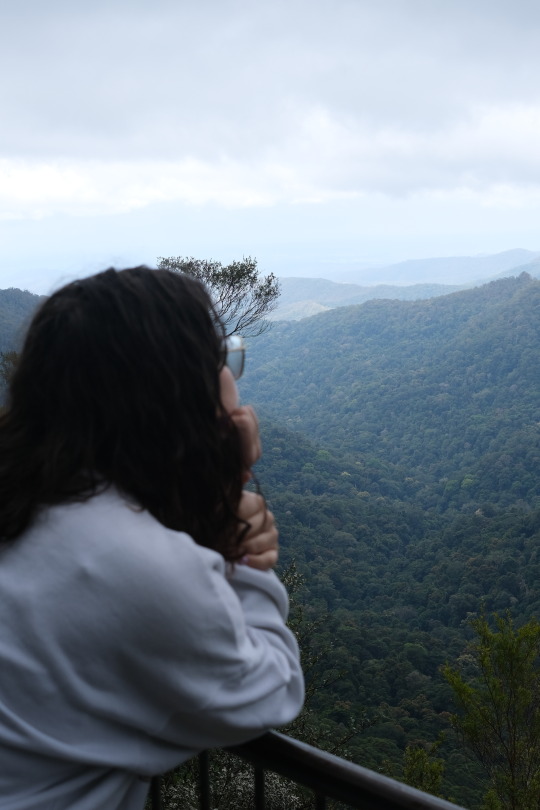
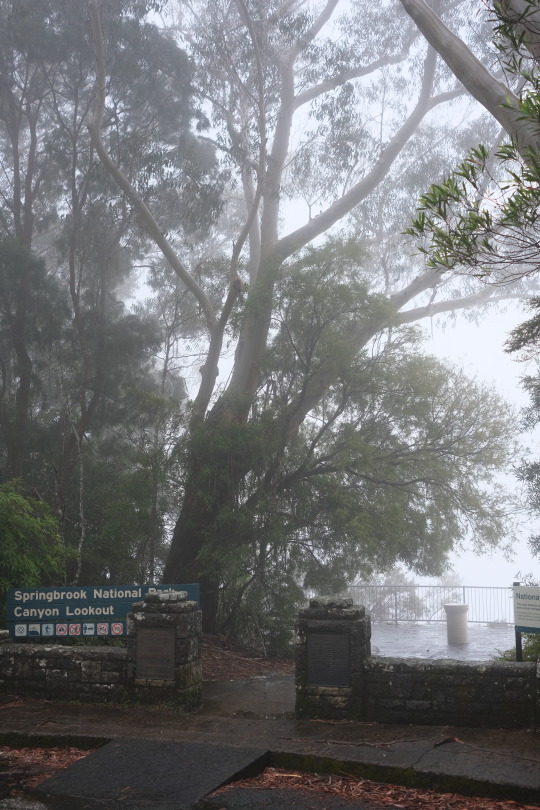

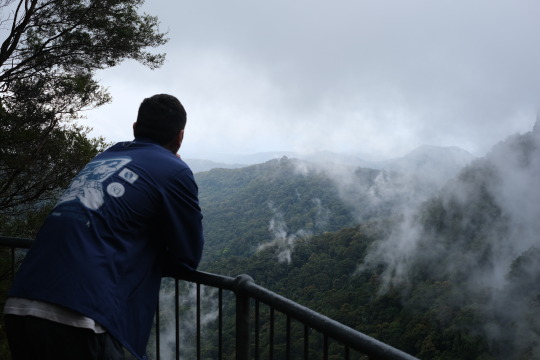
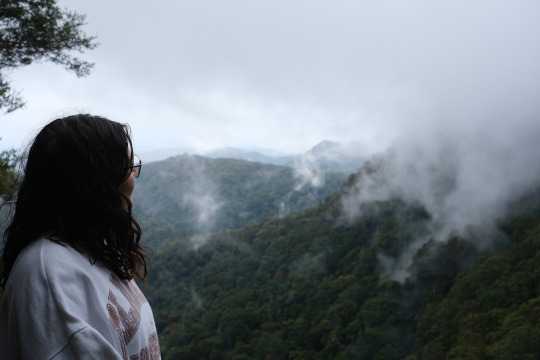
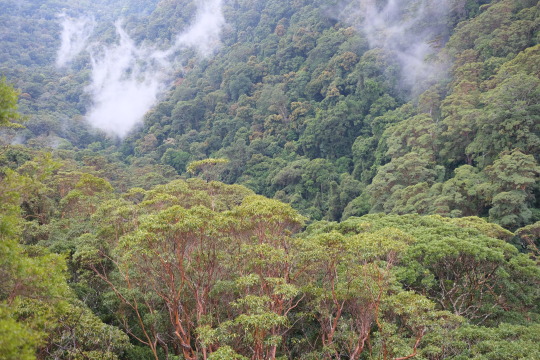
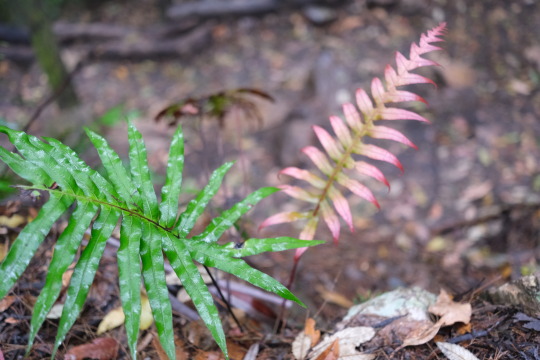
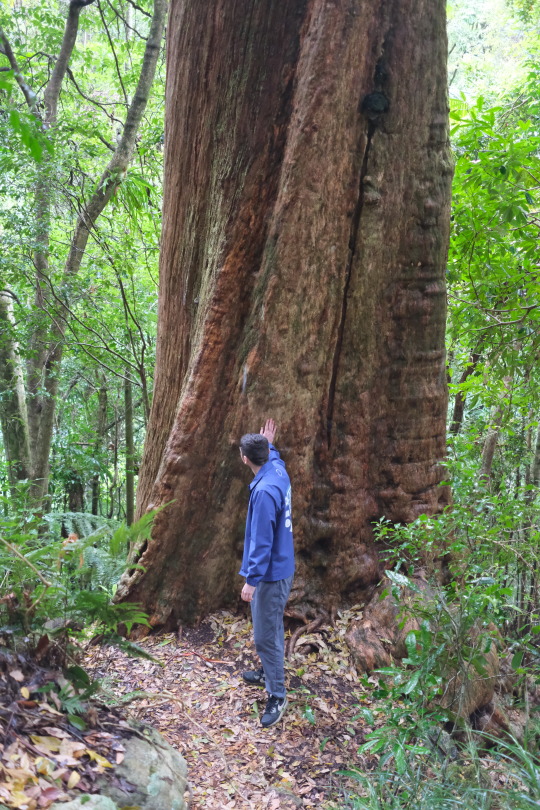

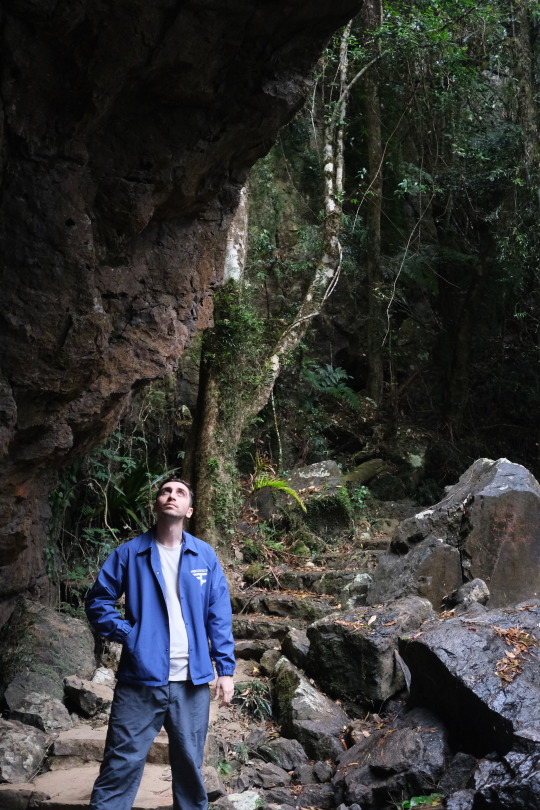


Springbrook National Park, Gold Coast 2023
#National Park#queensland#australia#east coast#forest#Springbrook National Park#springbrook#Gold Coast#Antarctic Beech Tree#tree#Ancient#twin falls#falls#photography#Nature
2 notes
·
View notes
Text
youtube
This was aired back in 2020. In time of posting this it’s 2024. This is a very fascinating documentary about the climate of the planet in the past, and what it might look like in the future. I highly suggest everyone watch this.
Paleontologist Kirk Johnson explores the dynamic history—and future—of ice at the poles. (Aired February 5, 2020)
Official Website: https://to.pbs.org/3EUn0KC | #novapbs
In this two-hour special, renowned paleontologist Kirk Johnson takes us on an epic adventure through time at the polar extremes of our planet. Following a trail of strange fossils found in all the wrong places—beech trees in Antarctica, hippo-like mammals in the Arctic—Johnson uncovers the bizarre history of the poles, from miles-high ice sheets to warm polar forests teeming with life. What caused such dramatic changes at the ends of the Earth? And what can the past reveal about our planet’s climate today—and in the future?
Chapters
00:00:00 Introduction
00:05:49 Hunting for Fossils on Islands near the North and South Poles
00:22:52 Fossil of New Dinosaur Species Found in Patagonia
00:29:04 Was Death Valley Always the Hottest Place on the Planet?
00:37:32 How Have Carbon Dioxide Levels Changed on Earth Over Time?
00:49:18 How Do Ice Sheets Form in Antarctica
00:56:47 How Did Life Persist Through the Ice Age?
01:11:29 Impacts of Rising Temperatures on Ice Cycles of the Planet
01:31:30 What Was the Warm World Like Before the Ice Age
01:43:04 This Cave Has Been Frozen for 100,000 Years
01:50:30 Conclusion
© 2020 WGBH Educational Foundation
All rights reserved
This program was produced by GBH, which is solely responsible for its content.
This program is made possible by viewers like you. Support your local PBS station here: https://pbs.org/donate/
Enjoy full episodes of your favorite PBS shows anytime, anywhere with the free PBS App: https://to.pbs.org/2QbtzhR
Stay up to date on the latest science discoveries, full episodes, articles, videos, and more by signing up for NOVA's newsletter here: https://www.pbs.org/wgbh/nova/newslet...
FOLLOW US:
NOVA
YouTube:  / novaonline
Facebook:  / novapbs
Twitter:  / novapbs
Instagram:  / novapbs
TikTok:  / novapbs
PBS
Facebook:  / pbs
Twitter:  / pbs
Instagram:  / pbs
YouTube:  / pbs
TikTok:  / pbs
Shop: https://shop.pbs.org/
#paleontology #paleontologist #antarctica #antarctic #northpole #southpole #iceage #arctic #dinosaur #dinosaurs #deathvalley #deathvalleynationalpark
Where is the north pole, north pole temperature, ellesmere island, is antarctica the south pole, new dinosaur discovered, new dinosaur documentary, patagonia chile, what is the carbon cycle, death valley weather, death valley temperatures, snowball earth, ice sheet, drake passage
#NOVA PBS Official#solarpunk#Polar Extremes#Ice Worlds#NOVA#climate change#climate collapse#climate crisis#global warming#global heating#Kirk Johnson#Antarctica#Arctic#fossils#ice caps#glacier#north pole#south pole#alaska#canada#ellesmere island#death valley#Youtube
8 notes
·
View notes
Text
If I could be a plant I'd be a tree. This one, specifically. Antarctic Beech.

4 notes
·
View notes
Text
Growing up in Australia is weird when a lot of the literature I was brought up with was English, along with the TV being a good percentage American.
You see we have Eucalypt trees as the dominant native tree…well, everywhere - there are 700 odd species 😁
Common Laurasian flora includes common names like beech, ash, oak, sycamore, birch, fir, larch, maple, elm, etc. all from the northern hemisphere.
It has taken me years to work out what these trees are.
Elm - identified, street tree where I went to school.
Ash - weed over here. Also bred to become claret ash.
Oak - couple around the suburbs, at least four cork oaks up in Belair National Park.
Birch - knew that one, silvery bark is quite iconic.
Maple - know what they look like, plus the Japanese variety, but no idea which type is the syrup type.
Beech - this one continues to elude me, despite the fact that beeches have a long history in Gondwana. The Otways and Tasmania host the southern or Antarctic Beech. Unfortunately, I haven’t identified one enough to remember enough detail. I have no idea what the northern beeches look like (I should look this up)
Fir - some kind of conifer, don’t know enough to identify it from Pines.
Larch - no idea.
The reason for all this babbling is today I discovered what a sycamore tree is. No only that, but I have been walking under a closely related if not the same tree every morning on the way to work. Here we know them as Plane trees. Admittedly, ‘sycamores’ are actually a common name used to describe several species across at least two genus. But I now know what one looks like.
Also, growing up with Enid Blyton and her deep, dark forests had me , as a kid, looking for such forests. South Australia only has dry sclerophyll forest. Eucalypts are hear adapted and turn their leaves edge on to the sun direction. There are no natural dark forests in South Australia. Pinus radiata plantations are about as close as we get.
But anyway, I’m a European descendant who grew up in a wildly different land, which I love, of course, but it has taken me half a century to identify some of the trees my ancestors grew up with.
/End babble
Nutty
(Who could always look them up, I guess)
7 notes
·
View notes
Text
Multituberculate Earth: Green (and white) Antarctica

The allochiropterid Chimil kaslem, from the Oligocene of Antarctica. Here depicted with speculative structural colours like those of mandrill faces, exhibitting for a potential mate. By hodarinundu
Through most of the Phanerozoic (that’s fancy for all the time span between the Cambrian and today) the South Pole has been much warmer than it is today (barring a short lived glaciation at the Devonian/Permian boundary) Even as recently as 5 million years ago our timeline’s Antarctica bore southern beech and conifer forests. The complete freezing was a very young and aberrant process, even if mild glaciations previously existed.
The nature of Antarctica’s white death is generally attributed to the complete isolation of the continent, the formation of the Drake Passage allowing cold waters to cycle viciously and sucking out all warmth and preventing warmer waters from arriving southwards. However, recent studies show that the main culprit was a decline in CO2 levels, and that full blown glaciation only happened when things were cold enough, a while after the Drake Passage formed as the first paragraph study shows.
In this timeline, the Azolla Event did not happen, and so atmospheric CO2 levels remained higher. Antarctica’s freezing was thus delayed, but the climatic drops at the Grand Coupure still left an impact.
In our world, the Eocene La Meseta formation bears the bulk of Antarctic Cenozoic fossils. Here, the suceeding Bay Formation picks up where it left off, bearing an unique mammalian fauna absence in our timeline. The formation seems to represent a southern forest ecosystem, but one drier than the La Meseta Formation. Conifers are the dominant trees, but southern beeches and ferns are present to lesser degrees. Temperatures were similar to those of modern Patagonia, though perhaps warmer and wetter near the coast.
Here, the dominant terrestrial mammals are notoptilodontoideans and leonardids, generalist groups, mirroring the dominance of small to mid-sized marsupials in our timeline’s Eocene (this timeline’s Eocene Antarctica was much warmer and tropical, btw). Several clades have continuity from the Eocene, but there is a drastic diversity drop by 45%, suggesting that the colder and drier environments were progressively less rich in biodiversity. Notoptilodontoideans seem to have dominated carnivorous and durophagous niches, while leonardids were mostly omnivorous generalists or insectivores. Examples of the former include Rageowrapper badenala, an ocelote sized predator with long, fang-like secondary plagiaulacoids, and Laga robana, a wolverine sized robust species with smaller fang plagiaulacoids but massive and brick-like normal ones; examples of the latter include O’tr ul, a mole-like necrolestid, and C’al anika, a deer-sized sengi-like omnivore.
Flying mammals are represented primarily by pteroectypodids, whose “feathered” wings gave them an advantage over other flying mammals in colder climates, and by allochiropterids, which evolved in Antarctica and thus maintained a higher species diversity here. It is here where we find the largest Oligocene members of either group, some reaching wingspans of two meters. A similar dichotomy occurs between them and their flightless cousins, which pteroectypodids being more raptorial, granivorous, molluscivorous or weird wood-chewing forms analogous to woodpeckers, while allochiropterids remain mostly either insectivores or generalists, with a few remaining frugivores feeding on podocarp fruits. Neither group appears to have been migratory, suggesting either year round foraging or hibernation, though there is currently no evidence of the latter. Aside from frugivorous allochiropterids, flying mammal diversity seems to increase by 30%, likely due to less competition from flightless species and because flight allows for covering larger distances in search of food.
Besides those, some fragmentary remains of gigantic acamapichtliids (+6 meter wingspans) and of insulonycteriids (+5 meter wingspans) are also present, suggesting that these giantic flyers were summertime visitors or even permanent residents, though only at large sizes and low diversities to cope with the colder, less biodiverse environment.
The most strongly affected groups were mesungulatids and gondwanatheres, more specialised and more vulnerable to the collapse of Eocene forests into these new colder ones. Ferugliotheriidae is only represented by one taxon, K’terrernen ultima, a hare sized generalistic herbivore in a place where tougher vegetation like grass has started to dominate. One sudamericid, Moinee antarcticus, was a sheep sized grazer, while two greniodontid genera, Yarramundi and Guwayana, appear to have been mixed grazer browsers, the former represented by five hare to sheep sized species and the latter by one boar-sized one, G. koolmatrie. The largest herbivore of the assemblage is Austrocamellus nungeena, an herbivorous mesungulatid weighting a mere 500 kg, a positive dwarf compared to its brethren further north. The apex predator was also a mesungulatid, Tarrabah semifrons, about as large as a striped hyena.
No herpetofauna aside from some tuatara-like sphenodontians, one small meiolaniid and rhinodermatid and leiopelmatid frogs survived, all represented by fragmentary remains. Some ratite like palaeognaths and giant flying pelagornithids are present, but the reccord for terrestrial birds is even scarcer.
By contrast, the surrounding oceans appear to have thrived with life. Both penguins, choristoderes and marine mammals – all groups, with monotremes and marine necrolestids in particular being quite diverse due to these being their ancestral homewaters – appear in great abundance in the coastoal deposits, the colder waters being more nutrient rich than tropical ones. Rockeries of millions of flightless seabirds and mammals littered the beaches, breeding even during winter months. The largest mammal of the Oligocene Antarctic is Soorts giganteus, a taeniolabidid as large as a Steller’s Sea Cow that foraged in the rich kelp forests, which compose its many known coprolites.
In this timeline, Antarctica thus remained hospitable for longer. True, the colder climate did make things harder for its terrestrial inhabittants, but while the old order of gondwanatheres, mesungulatids, ratites and herpetofauna (choristoderes aside at least) is on its way out, the generalists and sea dwellers keep going. And given that the Miocene will see a rise in temperatures, who knows what weird directions the southernmost continent will take, now that its future is not bleak?
3 notes
·
View notes
Video
youtube
Hiking Elabana Falls & Box Log Falls in Queensland.

Come and join me on a beautiful hike through the Gondwana Rainforests of Lamington National Park, Queensland. The Box Forest Circuit is pure hiking magic 🌿🥾 Elabana Falls and Box Log Falls are the show-stealers. If you’re craving a lush, waterfall-studded adventure just two hours from Brisbane, this one’s got your name written all over it.
Where is it? The trail kicks off from the Green Mountains section of Lamington National Park, specifically from the O’Reilly’s Rainforest Retreat carpark in the Gold Coast hinterland. You're entering one of the world’s most ancient and ecologically rich rainforests, part of a UNESCO World Heritage area 🌎✨. Think moss-draped trees, strangler figs, and rare Antarctic beech that trace their lineage back to the age of the dinosaurs 🦖

How to get there
From Brisbane or the Gold Coast, head toward Canungra and follow the winding Lamington National Park Road up to O’Reilly’s 🚗🌄. It’s a breathtaking drive, but prepare for hairpin bends and keep your eyes peeled for wildlife 🦜🦘. Parking is available at the trailhead, and the Box Forest Circuit is well signed from there.
The Hike: Box Forest Circuit (10.9km loop) Clocking in at around three and a half to four and a half hours return, this moderate-grade hike is one of the park’s most rewarding. You’ll cross trickling creeks, descend through fern-filled gullies, and walk beneath towering rainforest canopy, with more than a dozen waterfalls along the way 🌊🌳. Perfect for photography, nature immersion, or simply getting your boots dirty in one of Queensland’s most pristine spots.

What creatures are there?
The Lamington crayfish 🦞, found in the cool streams of Lamington National Park, is a vibrant blue freshwater crustacean. Endemic to Queensland, it's adapted to life in rainforest creeks, thriving in pristine waters. Often spotted after rain, this striking creature is a hidden gem in Australia’s subtropical wilderness 🌿💧

Elabana Falls
Arguably one of the most photographed falls in the region, Elabana greets you halfway through the loop 📸💦. The waterfall tumbles in two tiers—first a delicate veil into a plunge pool, then over a mossy rock face framed by dense ferns and dappled light. It’s serene, surreal, and utterly spellbinding. Bring a wide-angle lens, you’ll thank yourself later.

Box Log Falls
Just five to ten minutes beyond Elabana, Box Log Falls is wilder and more rugged, cascading in multi-stream ribbons over a rocky ledge 🌊🌿. It’s a less crowded gem and a great place to sit and listen to the symphony of water and birdsong 🎶🦉. During or after rain, prepare to be awestruck.

A walk through deep time
This ancient forest is the remnant of the supercontinent Gondwana, once shared by Australia, Antarctica, and South America 🕰️🌏. The Antarctic beech trees lining parts of the track are over two thousand years old. Indigenous people of the Yugambeh language region lived with and protected this land for generations, and in more recent history, early conservationists fought to preserve it from logging in the early 1900s. Thanks to their efforts, you’re walking through a living museum of Earth's past.
Look and listen Keep an eye out for vibrant crimson rosellas, Albert’s lyrebirds mimicking your footsteps, and carpet pythons basking on sunny rocks 🦜🐍. In summer, the air is alive with the buzzing and clicking of insects. In winter, mist drifts among the trees, giving the circuit a magical, almost Tolkien vibe 🧙♂️🌫️.

Wrap-up Whether you're chasing waterfalls, hiking Queensland’s lushest rainforests, or just craving deep green solitude, Elabana and Box Log Falls along the Box Forest Circuit deliver in spades 🌿💦. Pack your boots, your curiosity, and your sense of wonder. This isn’t just a trail, it’s a journey into the beating heart of an ancient land.
0 notes
Text

“After rain after many days without rain,
it stays cool, private and cleansed, under the trees, and the dampness there, married now to gravity,
falls branch to branch, leaf to leaf, down to the ground
where it will disappear—but not, of course, vanish except to our eyes. The roots of the oaks will have their share,
and the white threads of the grasses, and the cushion of moss;
a few drops, round as pearls, will enter the mole’s tunnel;
and soon so many small stones, buried for a thousand years,
will feel themselves being touched.”
~ Mary Oliver, “Lingering in Happiness” from “Why I Wake Early”
Photo: Antarctic Beech (Nothofagus) trees in Springbrook, QLD - photo by Mark Coburn
0 notes
Text
Gondwana Rainforests

Today, we're diving into the lush and ancient world of the Gondwana Rainforests, a UNESCO World Heritage Site nestled in the heart of Australia. If you're a nature enthusiast, adventure seeker, or just someone who craves a serene escape, this is the place to be.
The Gondwana Rainforests are a living testament to the Earth's history, dating back over 180 million years. These rainforests are remnants of the supercontinent Gondwana, which once covered the southern hemisphere. Wander through these primeval forests, and you'll feel like you've stepped back in time.
Prepare to be captivated by the incredible diversity of flora and fauna here. From towering Antarctic Beech trees to ancient ferns and orchids, the plant life is astonishing. Keep your eyes peeled for the vibrant plumage of native birds, the intricate webs of golden orb spiders, and the shy marsupials that call this rainforest home.
One of the jewels in the Gondwana Rainforests' crown is the Blue Mountains National Park. Famous for its towering eucalyptus trees and stunning vistas, this park offers everything from challenging hikes to relaxing strolls. Don't miss the iconic Three Sisters rock formation, which has its own intriguing Aboriginal legend.
Another gem within this UNESCO site is Lamington National Park. Here, you can explore subtropical rainforests, take a dip in pristine waterfalls, and hike through lush valleys. The park is also a birdwatcher's paradise, with the chance to spot rare species like the Albert's lyrebird.
Border Ranges National Park is a place of rugged beauty, with its cascading waterfalls and dramatic escarpments. Take a journey along the scenic Border Ranges Drive, which offers panoramic views of the park's lush valleys and ancient forests.
To deepen your understanding of this incredible rainforest, visit the World Heritage Rainforest Centre in Springbrook National Park. Here, you can learn about the area's geological history, its Aboriginal connections, and the ongoing conservation efforts to protect this natural wonder.
Whether you're into hiking, birdwatching, or simply reconnecting with nature, the Gondwana Rainforests have something for everyone. The challenging treks, serene walks, and breathtaking viewpoints will leave you with memories to cherish.
In conclusion, the Gondwana Rainforests are a living testament to the Earth's ancient past and a reminder of the importance of preserving our natural heritage. So, if you're looking for a destination that will take your breath away, immerse you in history, and connect you with the natural world, pack your bags and embark on a journey to this UNESCO World Heritage Oasis. 🌳🦜🌏
0 notes
Photo



The Antarctic Beech (Nothofagus moorei) forest and temperate rainforest of Barrington Tops NSW. 7 September 2017.
6 notes
·
View notes
Photo

An Old Soul. Antarctic Beech Tree in Springbrook National Park, Queensland Australia. (OC)(4003 × 5996) via /r/EarthPorn https://ift.tt/3yDSD5V
0 notes
Text
The Great ACT-NSW-NZ Trip, 2023-2024 - St. Arnaud
After getting across Cook Strait without being shipwrecked (the weather was actually quite pleasant compared to some of the unholy gales that come through the gap, with the wind merely howling), we started our explorations of Te Waipounamu, the Island of Greenstone Waters. Pounamu is such a beautiful and useful stone that the Māori named the entire island after it.
Europeans called it South Island, or archaically New Munster. It covers 150,437 square kilometres, making it the world's 12th-largest island. We stopped at the Omaka Aviation Museum, which was worth it, but our first night was spent at St. Arnaud, formerly Rotoiti, a tiny alpine village.
It's certainly surrounded by mountains, and shows some really nice alpine geomorphology - hanging valleys left where subsiduary glaciers got cut off by the larger glaciers in the main valley, scree slopes where the greywacke of the mountains is disintigrating, and alpine lakes like Lake Rotoiti itself, formed when the glaciers retreated at the end of the last Ice Age and left behind huge piles of pebbles, gravel, and boulders to dam the meltwater.



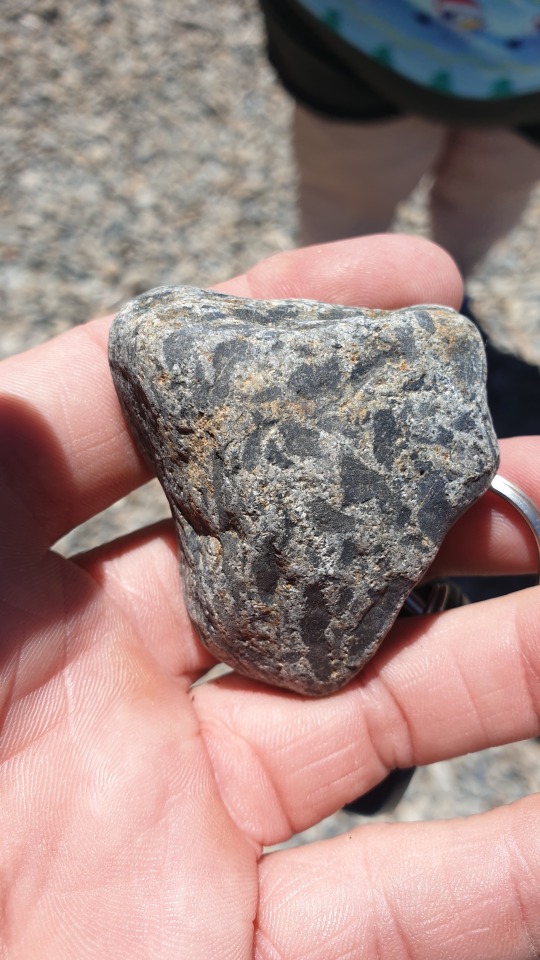

On the other hand St. Arnaud has also been built right on top of a considerably larger geological feature - the Alpine Fault. This tectonic boundary between the Australian and Pacific Plates runs for over 600km, and is one of the fastest moving faultlines in the world, moving, on average, almost 40mm a year. Geological formations that originally straddled the fault are now 480km apart. Unfortunately most of that movement happens during huge earthquakes every few hundred years - the last big one on the Alpine Fault happens around 1717, rupturing 400km of the fault at once.
Over the last 12 million years a significant upwards element to the fault movement has been added, creating the Southern Alps. Most of what is now the South Island got pushed 20 kilometers up, whereupon New Zealand's weather promptly ground it 16 kilometers back down again. The assorted rubble forms the plains on the east and southern coast, or got swept north by prevailing currents on the west coast. Exposed basement rock on the South Island is mostly greywacke, or heavily metamorphised rocks such as schist from even deeper. That's where the greenstone originally formed.
Anyway, the next big quake will probably trash St. Arnaud completely, and cut every road across the mountains for months. Happily that didn't happen on this trip - @purrdence had enough problems with a cyclone cutting roads and trainlines last time.
The original forest around St. Arnaud is mostly Antarctic Beech (Nothofagus sp.) and forms the basis of a unique and seriously threatened ecosystem. I'll tell you all about that over the upcoming posts.
Here's some species I've covered before.

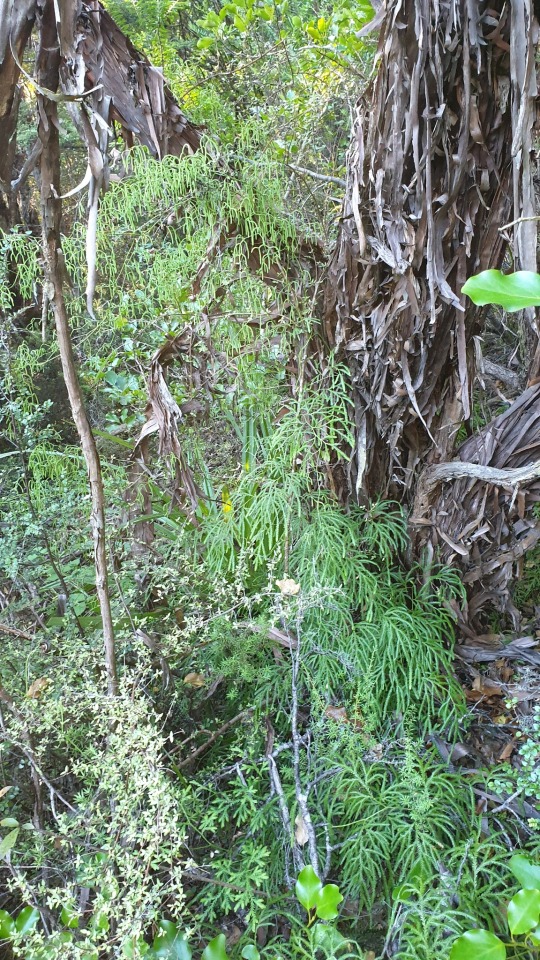
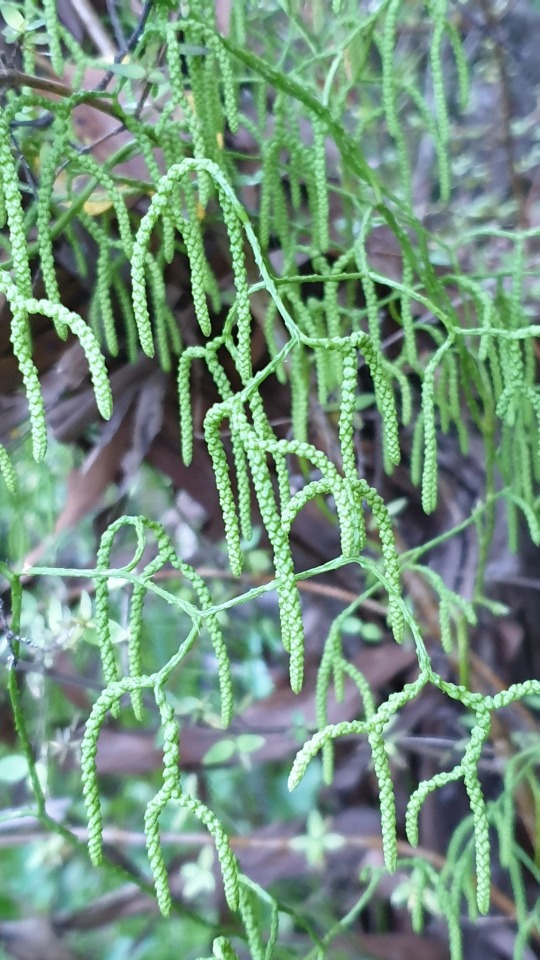



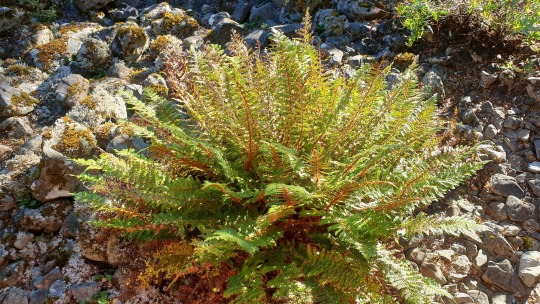


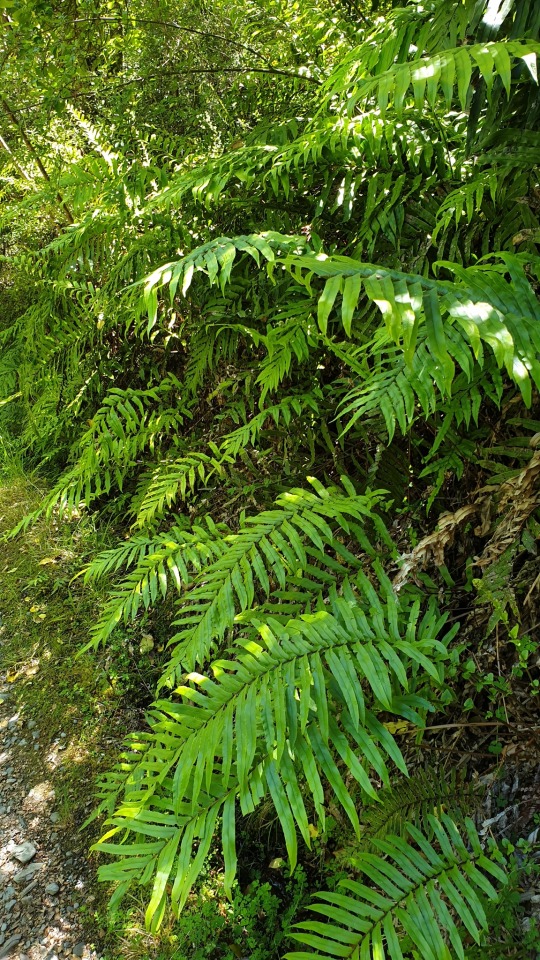

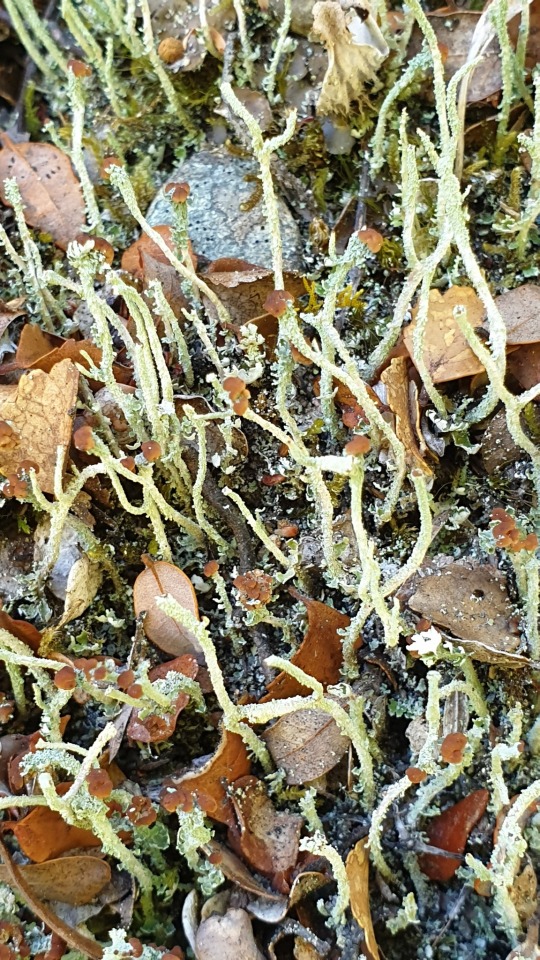

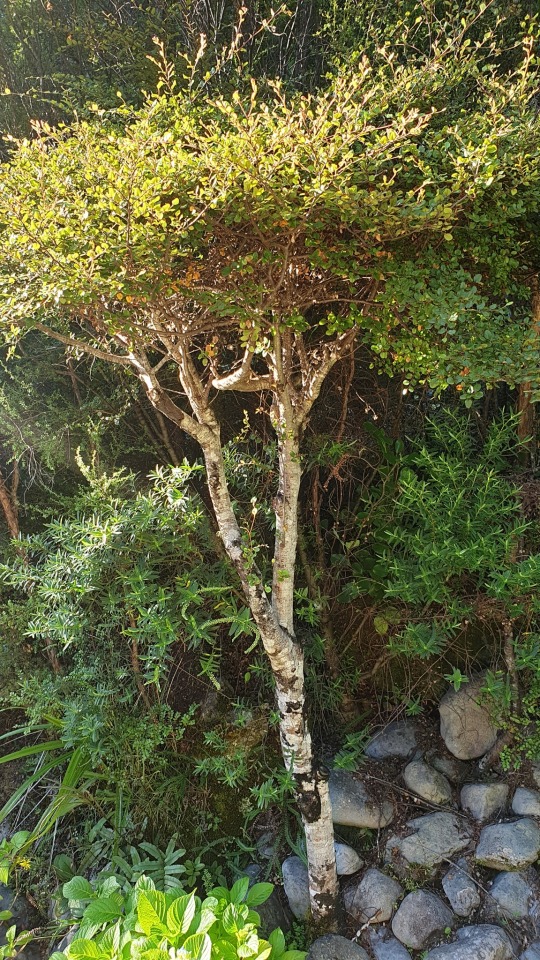










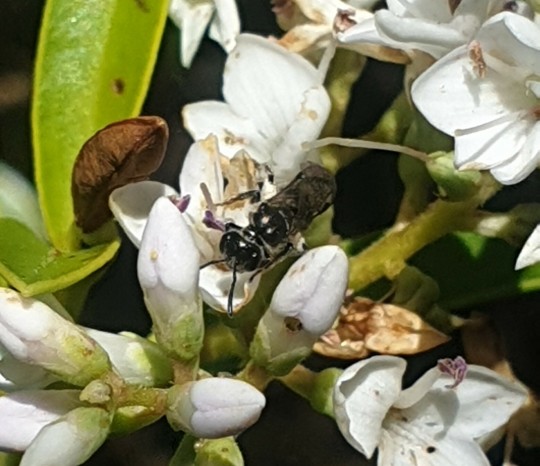
#st arnaud#new zealand geology#southern alps#alpine fault#alpine geomorphology#pseudopanax#araliaceae#new zealand plant#wahlenbergia#campanulaceae#blechnum#blechnaceae#nothofagus#antarctic beech#nothofagaceae#lycopodium#clubmoss#lycopodiaceae#discaria#matagouri#rhamnaceae#usnea#beard lichen#parmeliaceae#lancewood#Campylopus#new zealand moss#moss#star-moss#leucobryaceae
3 notes
·
View notes
Text

Nothofagus (Antarctic beech) con “false mistletoe,” Parque Nacional Tierra del Fuego, 2022.
The false mistletoe is a parasite and eventually kills the host false beech tree. Both have common names in English indicating early botanical misattribution. Neither is closely related to its northern hemisphere namesake.
#landscape#vegetation#nothofagus#mistletoe#mountains#national park#parque nacional tierra del fuego#argentina#2022#photographers on tumblr
15 notes
·
View notes
Photo

Ancient Antarctic beech tree, Australia [OC] [1200x1799]
6 notes
·
View notes
Photo

An Old Soul. Antarctic Beech Tree in Springbrook National Park, Queensland Australia. (OC)(4003 × 5996)
📷: theandylaurel
10 notes
·
View notes
Photo

An Old Soul. Antarctic Beech Tree in Springbrook National Park, Queensland Australia. (OC)(4003 × 5996) https://ift.tt/3yDSD5V
2 notes
·
View notes